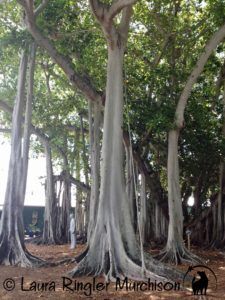
The next day we took a short drive up to Fort Myers to visit the winter homes of Thomas Edison and Henry Ford. Situated on the Caloosahatchee River, the adjacent estates contain a 21 acre botanical garden and now a museum. The site dates back to 1885 when Edison first visited southwest Florida and dubbed his retreat the “Seminole Lodge.” I had no idea he was good friends with Henry Ford, who purchased the adjoining property and named it “The Mangoes.” I was also incredibly surprised to learn Edison’s botanical garden boasts more than a thousand varieties of plants from around the world. I found it extremely humid, and that’s saying something coming from Texas. So we happily entered the air conditioned museum and were treated to displays of Edison’s work as an inventor including the telegraph, telephone, x-ray machine, and more. On the walls were reproduced photos chronicling the camping adventures of the two along with friends Harvey Firestone and American naturalist John Burroughs. They referred to themselves as the “vagabonds.” But what I remember most about this visit were the enormous, spectacular, exotic, old trees; one in particular — a banyan tree. It came in 1925 at only four feet and producing white sap that Edison, Henry Ford, and Harvey Firestone hoped to use in making rubber for tires. The banyan was not the answer but it remained, growing to an astounding acre in diameter! A part of it is pictured here and, if I am being honest, I found this more interesting than seeing their homes. The Indian novelist and poet Vikram Seth said, “I think it’s possible to be multi-rooted, rather like a banyan tree, without being deracinated.” That is how I feel I am and what I wish for our little one to be — multi-rooted like the banyan tree.
